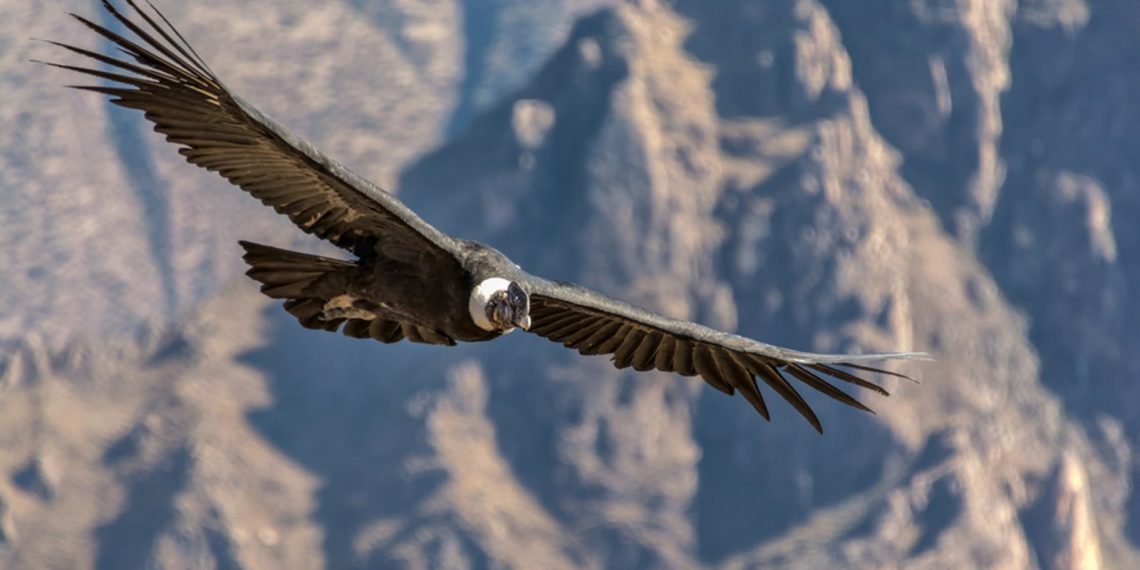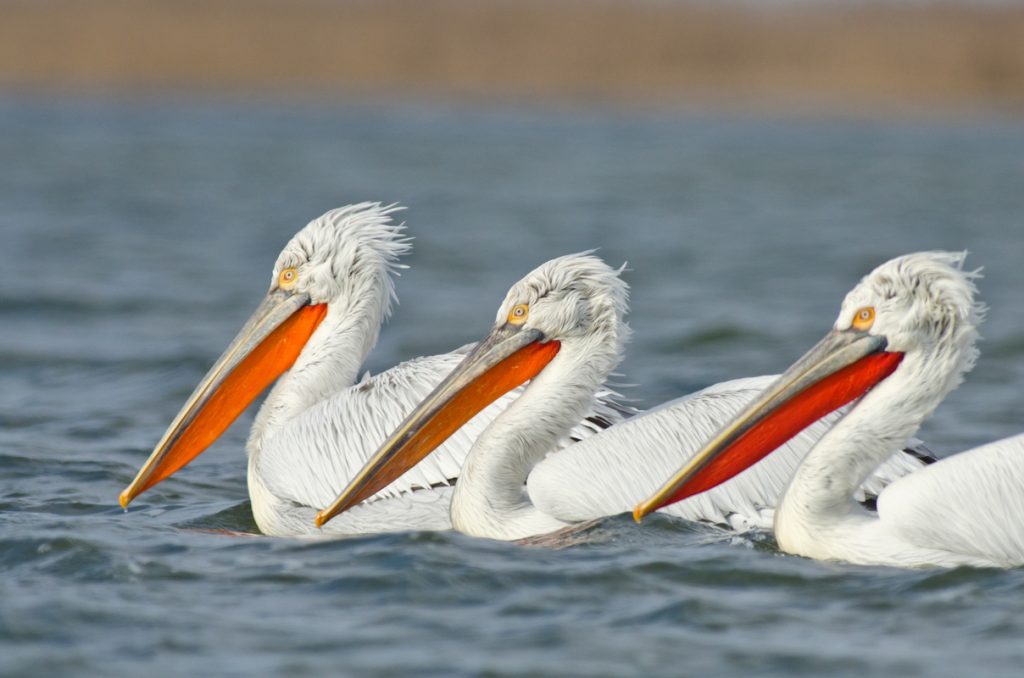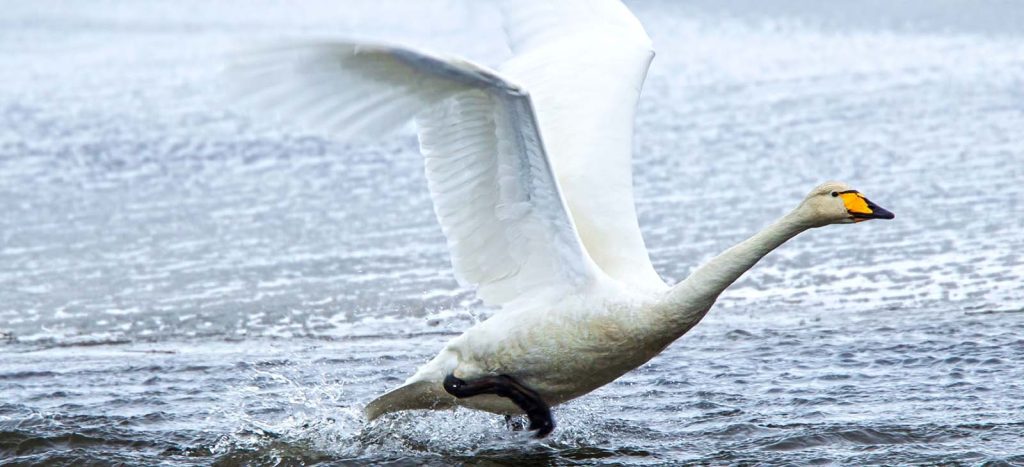
High Fliers Of The Animal Kingdom – The 9 Largest Birds That Roam Our Skies
When people think of large birds, they’re probably picturing the Ostrich or the Emu, which are flightless birds. It may be hard to believe but some of the largest living birds overall (by weight) in the world can actually fly. All of the flying birds on this list can reach up to at least 26 lbs, with the largest weighing over 40 lbs! In addition to being some of the heaviest flying birds in the world, many of the birds on this list have some of the largest wingspans in the world.
1. Wandering Albatross (Largest Wingspan)
The wandering albatross wins first place for the largest bird with a gigantic wingspan of up to 12 feet. While its wingspan is huge, however, the wandering albatross is not the heaviest bird in the world. It only weighs in at about 14-26 pounds. The wandering albatross is native to several parts of the Southern Hemisphere. It lives mostly out at sea and, as a matter of fact, only returns to land once every two years to breed.
Thanks to this albatross’s fantastic wingspan, this legendary flier can fly up to 600 miles a day. This distance would be equivalent to 18 round trips to the moon throughout their lifetimes. Unfortunately, albatrosses are beginning to dwindle in numbers with only about 25,000-26,000 adult birds left in the wild.

2. Dalmatian Pelican
The Dalmatian pelican can weigh as much as 33 pounds and has a potential wingspan of 8 feet to 11.5 feet. Some bustards and swans can be bigger than this pelican, but that is usually a rare occurrence. Dalmatian pelicans can breed all throughout south-eastern Europe and in several parts of Asia.
The Dalmatian pelican is actually the largest member of the pelican family. Like most other species of pelican, the Dalmatian pelican population has greatly declined over the years.
3. Andean Condor (Largest Bird of Prey)
The Andean Condor can make its mark both in the weight and wingspan department. It weighs up to 33 pounds (which is only nine pounds short of the great bustard) and has a wingspan of 8 feet 10 inches to 10 feet 10 inches.
As you have probably figured out, Andean condors are native to the Andes Mountains in South America. Sometimes they can even appear near deserts and coasts in that region as well. The species had made its way onto the endangered species list at one time, but through vigilant conservation efforts, the population has made a bit of a comeback.
4. Eurasian Black Vulture
Vultures are not generally considered to be the prettiest birds in the world, but the Eurasian Black Vulture definitely makes a statement in the large bird department. Also known as the black vulture, cinereous vulture, and monk vulture, the Eurasian black vulture has a wingspan of anywhere from 8 to 10 feet. It can weigh anywhere from 14-31 pounds, and unlike most bird species, the females are actually larger than the males.
As the name suggests, Eurasian black vultures are most commonly found in parts of Europe and parts of Asia. Like the Dalmatian pelican, the Eurasian black vulture population is steadily decreasing. It has made a place for itself on the nearly endangered species list.
5. Shoebill
The shoebill is a large, stork-like bird, but is no longer classified in the stork Ciconiiformes order. It appears to be more genetically similar to herons and pelicans. Shoebills have a wingspan of about 8 feet wide, and can weigh 11 to 12 lbs.
It lives in swamps of tropical east Africa, feeding on fish. They often benefit from hippo activity, as fish surface as submerged hippos pass by.
6. Trumpeter Swan (Largest North American Bird)
Most swans are fairly large and the trumpeter swan is no exception to this. With a 6 to 8-foot wingspan and weight range of 15 to 30 pounds, the trumpeter swan is actually the heaviest living bird native to North America. The largest trumpeter swan on record had a wingspan of 10 ft 2 in (3.1 m) and a weight of 38 lb (17.2 kg), which is non-typical.
They used to be nested all over North America, though their numbers have severely dwindled over the years with the arrival of people settling all over the continent. Trumpeter swans can be found primarily in Canada, Alaska, and several parts of the north-western United States. Since trumpeter swans are so large (both wingspan-wise and weight-wise) they usually require 300+ feet of space to take off.
7. Kori Bustard
The bustards are some of the heaviest birds in the world. The kori bustard is second only to the great bustard in the weight department with a range of 11-40 pounds. It only has a wingspan of 7-9 feet but it is definitely one of the heaviest birds out there.
These birds are native to South Africa, and although they are technically flying birds, kori bustards are heavy enough that they prefer to dwell on the ground. They tend to only fly when they feel threatened or are in serious danger. Some individuals have significantly exceeded the average weight. There are reports of individual kori bustards weight 51 lb (23 kg), 75 lb (34 kg), and even 88 lb (40 kg). It’s important to note that the size of these oversized bustards hasn’t been verified.

8. Whooper Swan
Just like its cousin the trumpeter swan, the whooper swan is a large bird. It has a wingspan range of 6-9 feet and a weight range of 16-30 pounds.
These swans can usually be found in parts of eastern Asia and parts of southern Europe, though they have been known to migrate as far as western Alaska. Whooper swans will also travel to the UK from Iceland to nest in wetlands and estuaries during the winter months. Like the albatross, whooper swans can fly hundreds of miles in one day. When they fly from the UK to Iceland and vice versa, they don’t stop until they get there.
In the spring, whooper swans will fly, non-stop, from Scotland to Iceland. During this migration, they travel at very high altitudes; indeed, a pilot flying at 8,000 feet once reported seeing a flock of swans that were thought to be whoopers.
9. Great Bustard
At long last, we have come to the king of heavy flying birds, the great bustard. This bird, while only having a wingspan of 7-10 feet, can weigh as much as a whopping 44 pounds.
The males are pretty massive, and the females are slightly smaller. The largest recorded great bustard was 46 pounds. Great bustards are native to Europe with a vaguely familiar subspecies dwelling in Asia. Unfortunately, like many other birds on this list, the great bustard’s numbers are dwindling as well.
Have you seen any of these large birds in the wild? What is the largest bird that you’ve seen? We would love to hear your experiences below.
You May Also Like

The Origin Of The Universe – The Big Bang And Steady-State Theories (Part 2)
2021-11-11
The Rarest Plants On The Planet (Part 1)
2021-09-02


